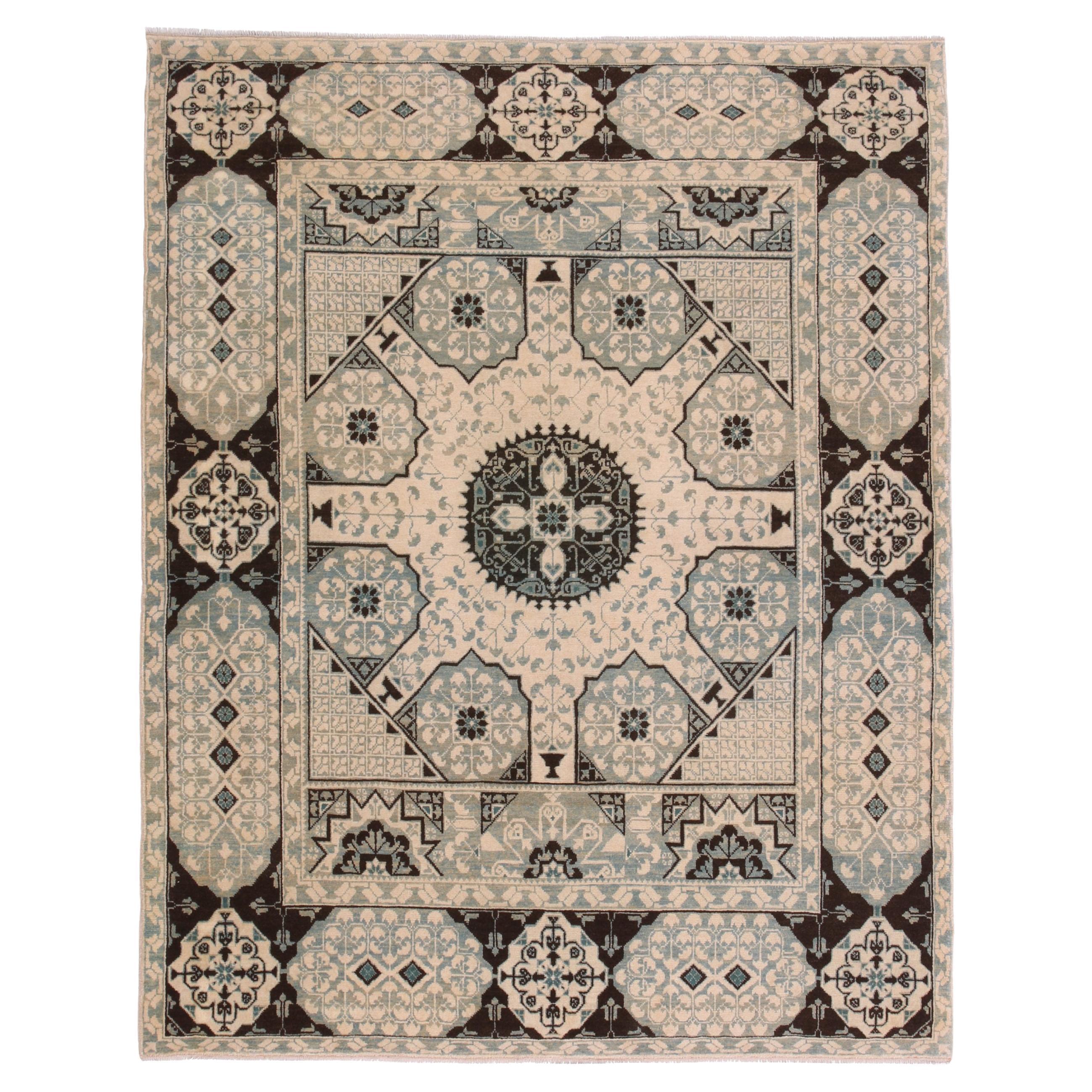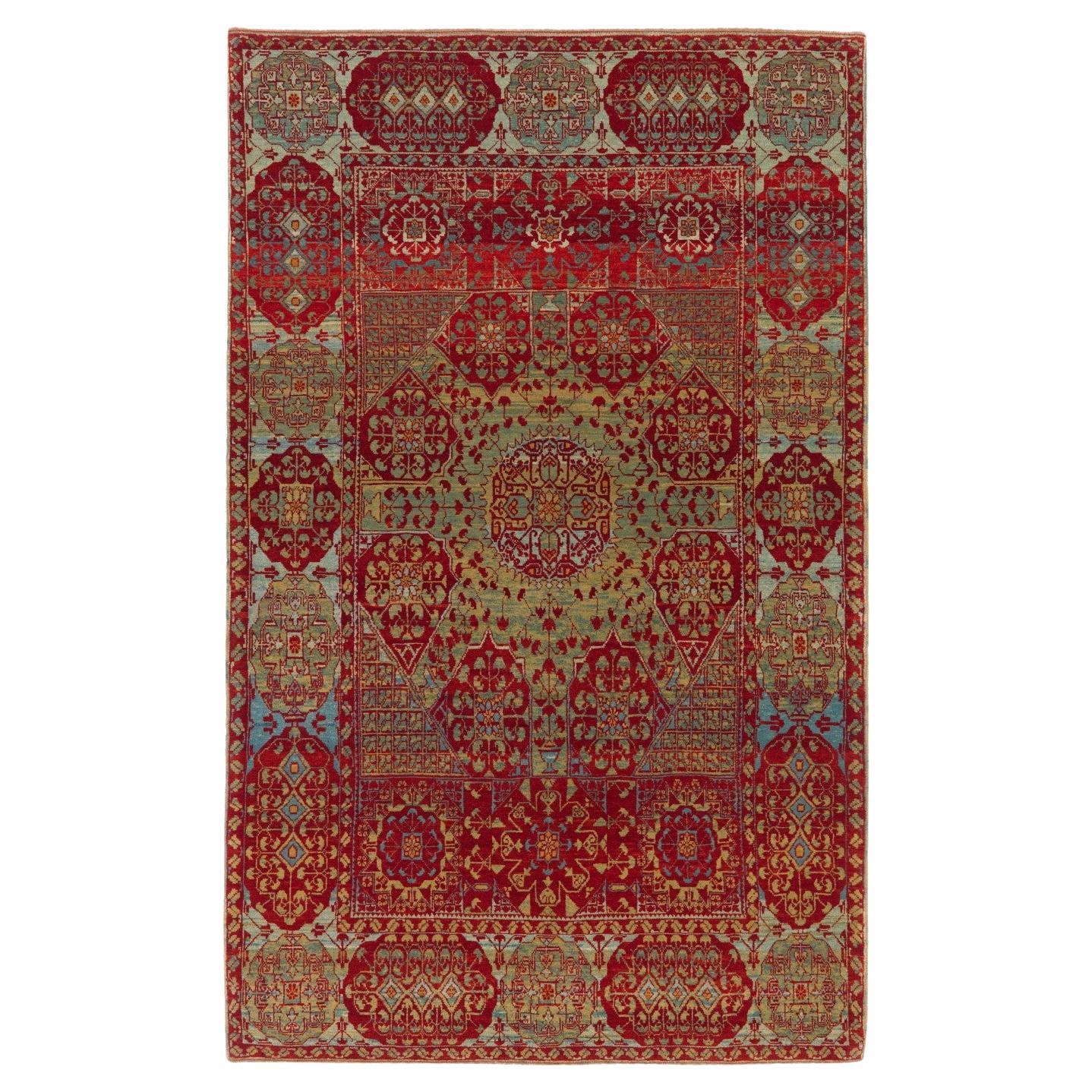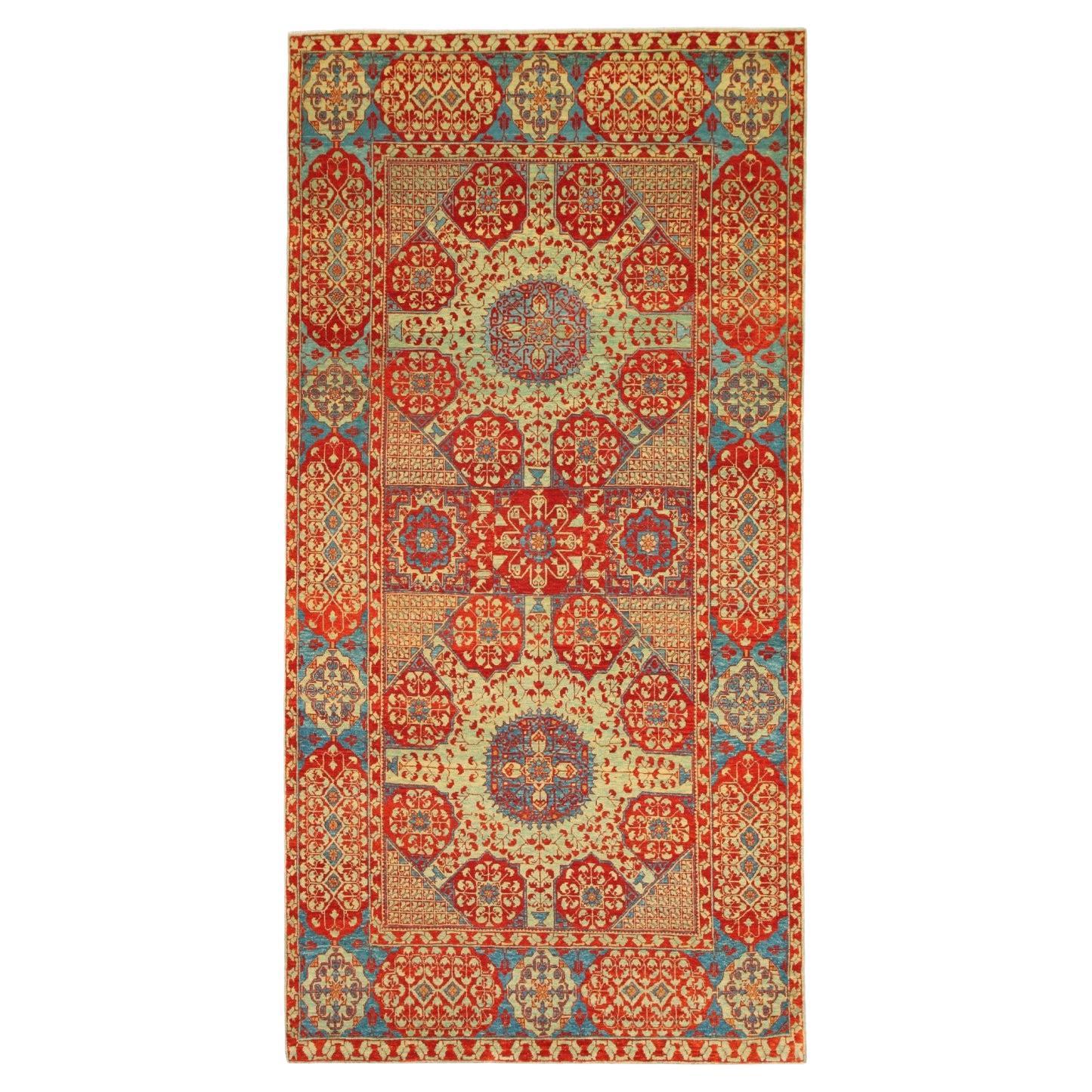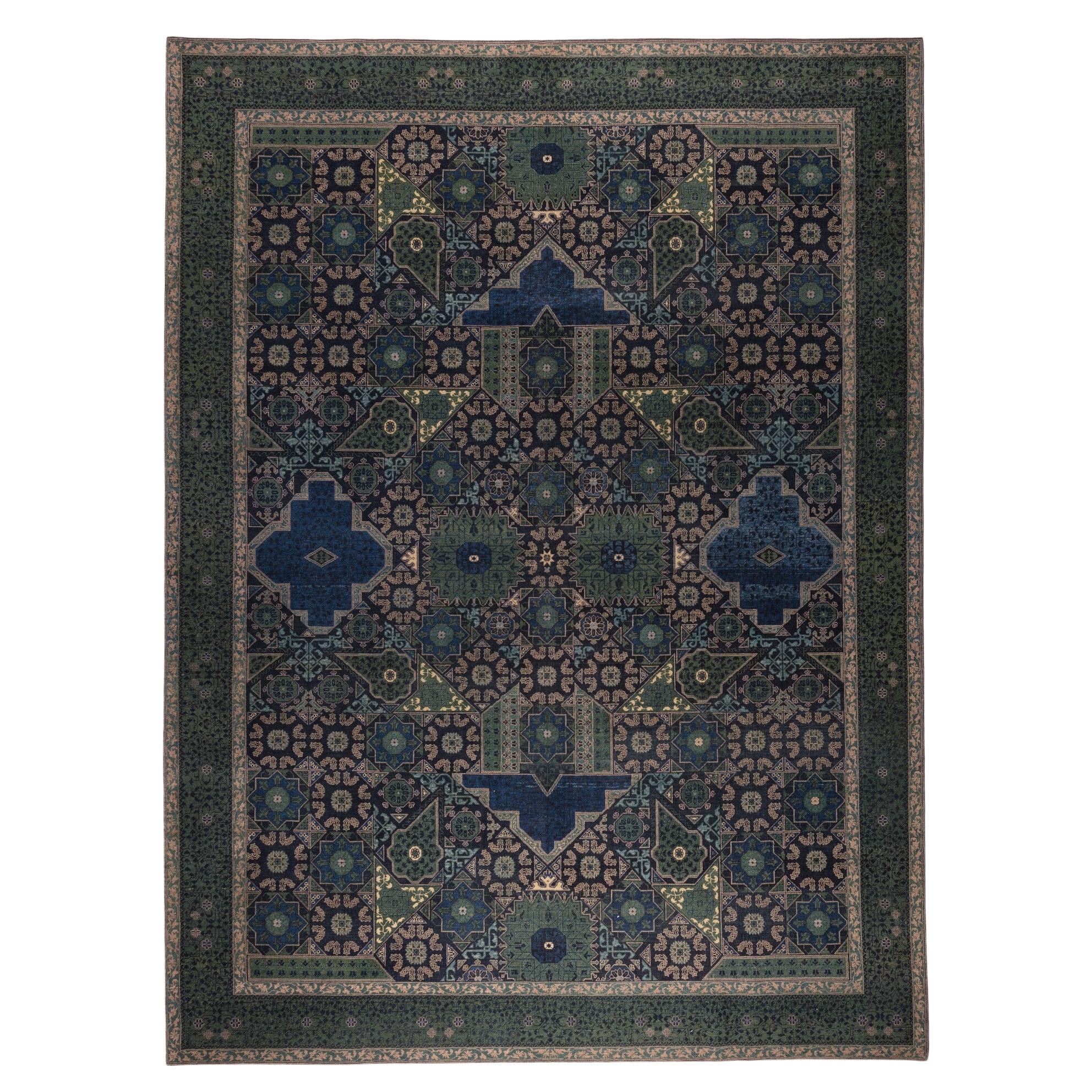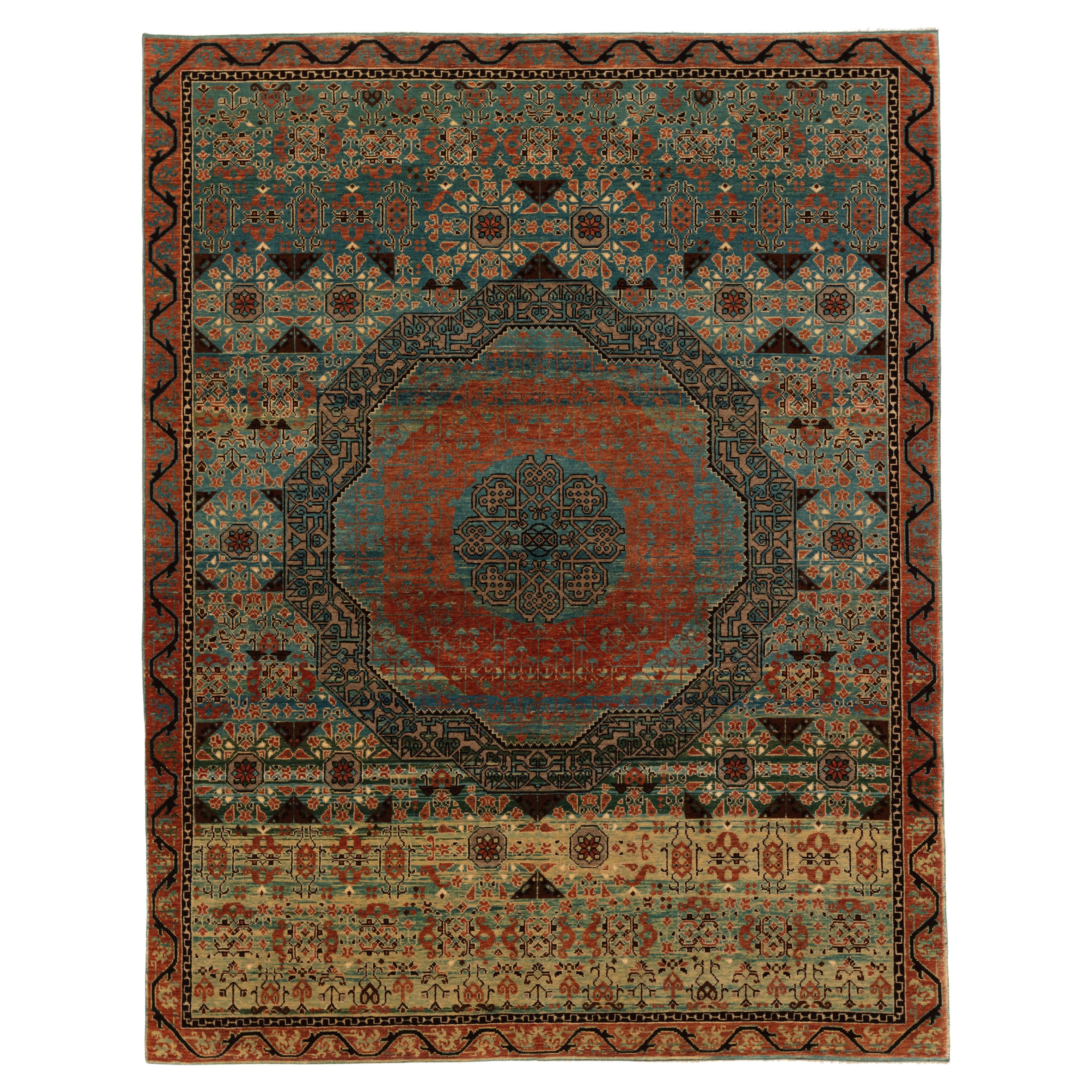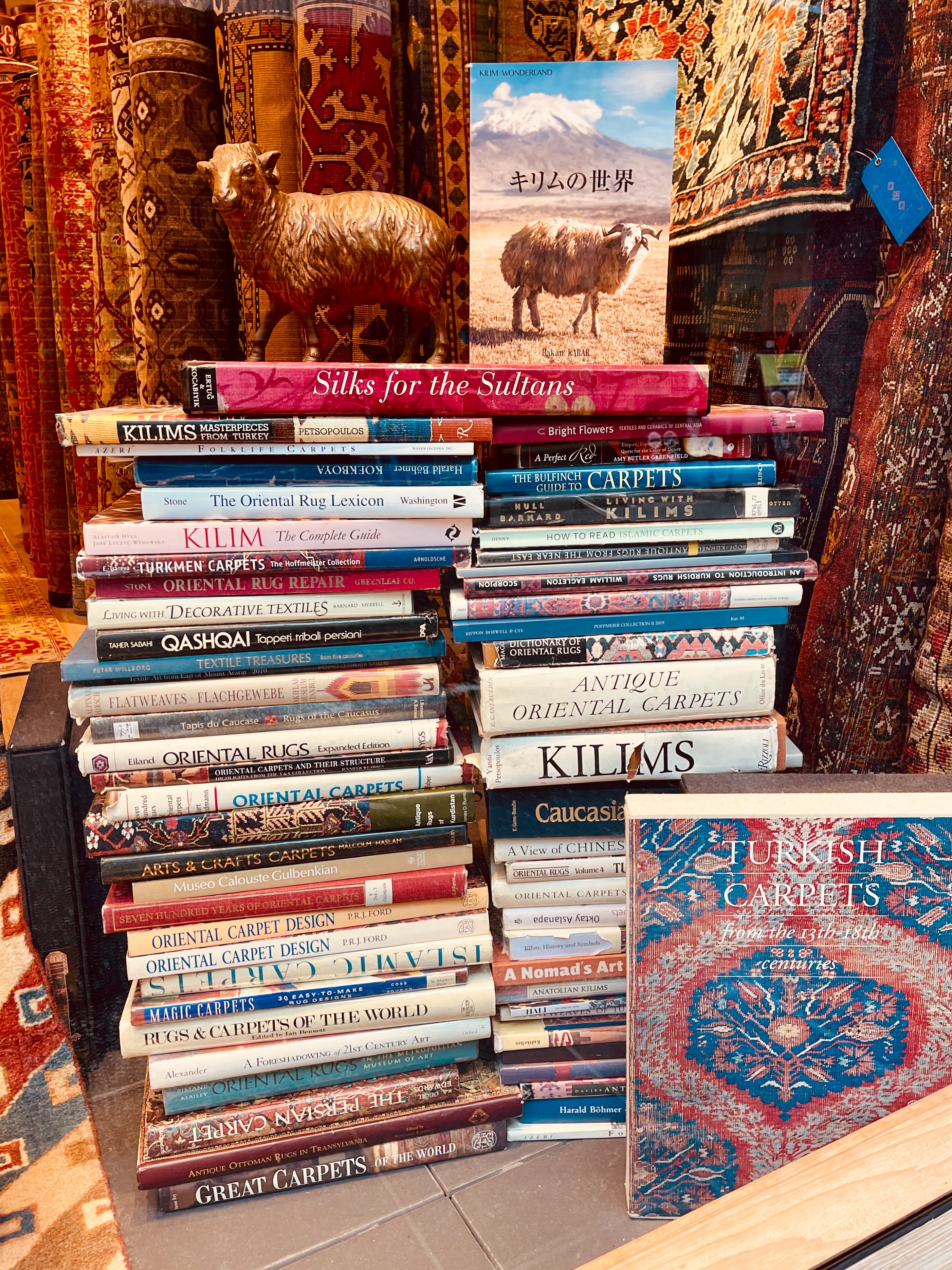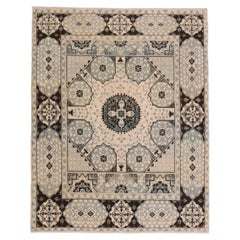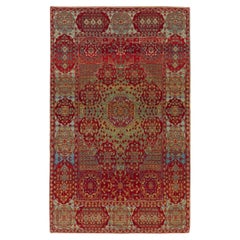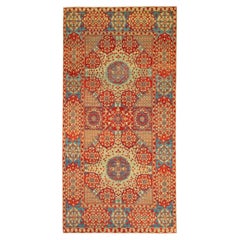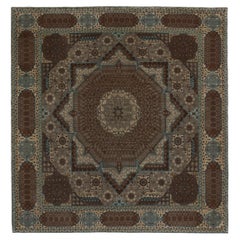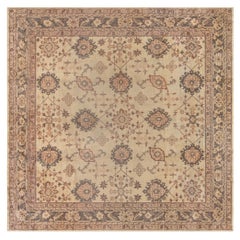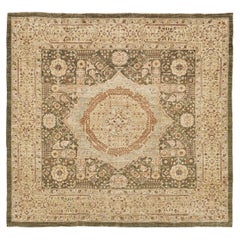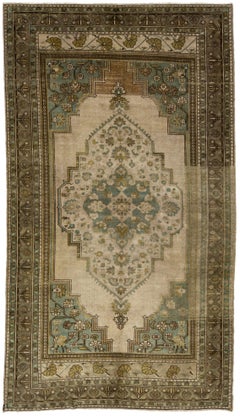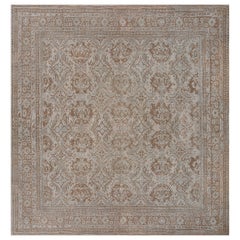Items Similar to Ararat Rugs Mamluk Carpet with Cup Motif, Antique Revival Rug, Natural Dyed
Video Loading
Want more images or videos?
Request additional images or videos from the seller
1 of 11
Ararat Rugs Mamluk Carpet with Cup Motif, Antique Revival Rug, Natural Dyed
$3,800
£2,883.35
€3,296.86
CA$5,307.57
A$5,901.30
CHF 3,081.33
MX$71,833.13
NOK 39,316.44
SEK 36,837.62
DKK 24,605.04
Shipping
Retrieving quote...The 1stDibs Promise:
Authenticity Guarantee,
Money-Back Guarantee,
24-Hour Cancellation
About the Item
The source of the rug comes from the book Renaissance of Islam, Art of the Mamluks, Esin Atil, Smithsonian Institution Press, Washington D.C., 1981 nr.125. This is a rug with a cup motif design late 15th-century rug from the Mamluk Sultanate of Cairo, Egypt. It is exhibited at the Washington, D.C. The Textile Museum, R.16.1.2 . The layout of this rug is characteristic of the smaller, almost square Mamluk carpet. A wide border encloses the field, divided into horizontal units consisting of a central square flanked above and below by rectangular panels. The height of the rectangular panels is approximately one-third that of the square and is equal to the width of the border. The corners of the central square are cut into triangles, creating an octagon with green ground. The octagon contains a blue polylobed medallion, which encloses an eight-pointed star with a multipetaled rosette in the core. The area between the star and the lobed medallion has floral motifs springing outward from the arms of the star. The angles of the octagon bear eight isolated and irregular polygons with a red ground; each of these units is adorned with a multipetaled rosette enclosed by a square with papyrus motifs springing from its sides and corners. The field of the octagon is filled with similar papyrus sprays, some of which appear to grow from the eight-stemmed cups placed between the polygons. The triangles in the corners bear a checkerboard pattern with a stylized lotus blossom (or fleur-de-lis) in each segment. The compositional layout of the rug is reminiscent of the illuminated frontispieces, which reveal similar proportions and internal divisions. Radiating designs of geometric components filled with floral motifs are a characteristic feature of Mamluk art, as observed in manuscripts, metalwork, glass, ceramics, woodwork, and textiles of the era. The stemmed cups represented in the central square appear to have been inspired by the blazon of the saqi. Here, the cups are used as a decorative feature and cannot be identified as blazons. The same decorative motif is found on a rug in Berlin. Our designers interpret the design of the rug, and soft colors are chosen for this rug.
Color summary: 4 colors in total;
Rare Grey 105 (Specially Washed)
Moss Green 27 (Spurge – Indigo)
Natural Wool Color 37 (Specially Washed)
Dark Brown 316 (No Dye – Sheep’s Own Color)
Group: Islamic Rugs Family
Area: Mamluk
Material of Pile: Natural Dyed Hand-spun Wool
Material Warp / Weft: Wool on Wool
Structure: Symmetrical knot on depressed warp inclining to the right
Knots Density: 39x39
Production Place: Amasya
Stock Location: Tokyo
Size (EU): 157 X 148cm
Size (US): 5'1" X 4'10"
Area (EU): 2.3m²
Area (US): 25ft²
- Creator:Ararat Rugs (Manufacturer)
- Dimensions:Width: 58.27 in (148 cm)Length: 61.82 in (157 cm)
- Style:Revival (In the Style Of)
- Materials and Techniques:
- Place of Origin:
- Period:
- Date of Manufacture:2023
- Production Type:New & Custom(One of a Kind)
- Estimated Production Time:Available Now
- Condition:
- Seller Location:Tokyo, JP
- Reference Number:Seller: 003311stDibs: LU8206235269372
ARARAT RUGS
We know and believe that the geography we come from, our past, and our lifestyle are the most important bond between us to carry the oriental carpet art and culture to the next generations along with our core values in our ongoing growth journey.
We are aware that the way to achieve this goal and carry this priceless art and culture to the future depends on a lot of work with all our people every day while adhering to our core values.
For us, art is meaningful in the sense that it brings together various cultures around the world. It is an honor for us that oriental carpet art and culture have been instrumental in this for centuries and that we are a part of this business.
We are tirelessly keeping an eye on auction house information around the world about carpets. New York's Metropolitan, London's Victoria & Albert Museums, and other famous art museums, as well as small specialized museums that house private collections, and books about oriental carpets to collect information on outstanding carpet designs and patterns from around the world. It's our Self-improving and Self-developing culture.
As Turkish Culture of Hospitality, the Kurdish Culture of Generosity, and as Japanese Culture of Business Punctuality; are the most important values that this multicultural background has taught and bequeathed to us. It is essential and valuable for us that you feel this feeling not only by looking at our oriental carpets but from the moment you contact us.
About the Seller
5.0
Platinum Seller
Premium sellers with a 4.7+ rating and 24-hour response times
Established in 1970
1stDibs seller since 2023
55 sales on 1stDibs
Typical response time: 3 hours
- ShippingRetrieving quote...Shipping from: Tokyo, Japan
- Return Policy
Authenticity Guarantee
In the unlikely event there’s an issue with an item’s authenticity, contact us within 1 year for a full refund. DetailsMoney-Back Guarantee
If your item is not as described, is damaged in transit, or does not arrive, contact us within 7 days for a full refund. Details24-Hour Cancellation
You have a 24-hour grace period in which to reconsider your purchase, with no questions asked.Vetted Professional Sellers
Our world-class sellers must adhere to strict standards for service and quality, maintaining the integrity of our listings.Price-Match Guarantee
If you find that a seller listed the same item for a lower price elsewhere, we’ll match it.Trusted Global Delivery
Our best-in-class carrier network provides specialized shipping options worldwide, including custom delivery.More From This Seller
View AllArarat Rugs Mamluk Carpet with Cup Motif, Antique Revival Rug, Natural Dyed
By Ararat Rugs
Located in Tokyo, JP
The source of the rug comes from the book Renaissance of Islam, Art of the Mamluks, Esin Atil, Smithsonian Institution Press, Washington D.C., 1981 nr.125. This a rug with a cup motif design late 15th-century rug from Mamluk Sultane of Cairo, Egypt. It is exhibited at the Washington D.C. The Textile Museum, R.16.1.2 . The layout of this rug is characteristic of the smaller, almost square Mamluk carpet. A wide border encloses the field, divided into horizontal units consisting of a central square flanked above and below by rectangular panels. The height of the rectangular panels is approximately one-third that of the square and is equal to the width of the border. The corners of the central square are cut into triangles, creating an octagon with green ground. The octagon contains a blue polylobed medallion, which encloses an eight-pointed star with a multipetaled rosette in the core. The area between the star and the lobed medallion has floral motifs springing outward from the arms of the star. The angles of the octagon bear eight isolated and irregular polygons with a red ground; each of these units is adorned with a multipetaled rosette enclosed by a square with papyrus motifs springing from its sides and corners. The field of the octagon is filled with similar papyrus sprays, some of which appear to grow from the eight stemmed cups placed between the polygons. The triangles in the corner bear a checkerboard pattern with a stylized lotus blossom (or fleur-de-lis) in each segment. The compositional layout of the rug is reminiscent of the illuminated frontispieces, which reveal similar proportions and internal divisions. Radiating designs of geometric components filled with floral motifs are a characteristic feature of Mamluk art...
Category
21st Century and Contemporary Turkish Revival Turkish Rugs
Materials
Wool, Natural Fiber, Organic Material
Ararat Rugs Mamluk Carpet with Cup Motif, Antique Revival Rug, Natural Dyed
By Ararat Rugs
Located in Tokyo, JP
The source of the rug comes from the book Renaissance of Islam, Art of the Mamluks, Esin Atil, Smithsonian Institution Press, Washington D.C., 1981 nr.125. This a rug with a cup moti...
Category
21st Century and Contemporary Turkish Revival Turkish Rugs
Materials
Organic Material, Natural Fiber, Wool
Ararat Rugs Mamluk Carpet with Cup Motif, Antique Revival Rug, Natural Dyed
By Ararat Rugs
Located in Tokyo, JP
The source of the rug comes from the book Renaissance of Islam, Art of the Mamluks, Esin Atil, Smithsonian Institution Press, Washington D.C., 1981 nr.125. This a rug with a cup moti...
Category
21st Century and Contemporary Turkish Revival Turkish Rugs
Materials
Wool, Natural Fiber, Organic Material
Ararat Rugs the Simonetti Mamluk Carpet 16th Century Revival Rug, Natural Dyed
By Ararat Rugs
Located in Tokyo, JP
The source of carpet comes from the book How to Read – Islamic Carpets, Walter B. Denny, The Metropolitan Museum of Art, New York 2014 fig.61,62. The five-star-medallion carpet was d...
Category
21st Century and Contemporary Turkish Revival Turkish Rugs
Materials
Wool, Natural Fiber, Organic Material
Ararat Rugs Mamluk Carpet, 16th Century Antique Revival Rug, Natural Dyed
By Ararat Rugs
Located in Tokyo, JP
The source of the rug comes from the book Völker, Angela, Die orientalischen Knüpfteppiche das MAK, Vienna: Böhlau, 2001: 42–5. This rug with the central star was designed in the early 16th century rug by Mamluk Sultane of Cairo, Egypt. It is exhibited at MAK – Museum of Applied Arts, Vienna Austria. As its impressive size, materials, and design quality suggest, the carpet is a product of an accomplished court workshop and likely dates from the late period of the last Mamluk dynasty. The quantity of the colors used speaks for an earlier date around 1500; the delicate vegetal border with leaf tendrils and the characteristic umbrella leaves...
Category
21st Century and Contemporary Turkish Revival Turkish Rugs
Materials
Wool, Natural Fiber, Organic Material
Ararat Rugs Mamluk Rug with Cusped Medallion Antique Revival Carpet Natural Dyed
By Ararat Rugs
Located in Tokyo, JP
The source of the rug comes from the David Collection, Copenhagen. This rug with the Cusped Medallion was designed in the early 16th-century rug by the Mamluk Sultanate of Cairo, Egy...
Category
21st Century and Contemporary Turkish Revival Turkish Rugs
Materials
Wool, Natural Fiber, Organic Material
You May Also Like
Doris Leslie Blau Antique Turkish Oushak Rug
Located in New York, NY
Antique Turkish Oushak rug
Size: 12'2" × 12'4" (370 × 375 cm)
Color: beige, brown, taupe.
This rare square-shaped antique Turkish Oushak rug is a magnificent example of Anatolian wea...
Category
Mid-20th Century Turkish Oushak Turkish Rugs
Materials
Wool
Mehraban Natural Dye Mamluk Revival Bliss Collection Square Rug
By Mehraban Rugs
Located in WEST HOLLYWOOD, CA
A captivating revival of Mamluk design rug that is meticulously woven from hand-spun wool and vegetable dyes. Taking the center stage is a magnificent circular ultramarine medallion ...
Category
2010s Afghan Central Asian Rugs
Materials
Wool
Antique Turkish Khotan Gallery Wool Rug with Medallion Motif in Light Brown
Located in Norwalk, CT
Beautiful Antique Turkish Khotan hand-knotted wool rug with a light brown color field. This Khotan has multicolor accents in a gorgeous all-over medallion floral motif.
This runne...
Category
Early 20th Century Turkish Khotan Chinese and East Asian Rugs
Materials
Wool
Antique Circa-1900 Hand-knotted Turkish Oushak Rug
Located in West Hollywood, CA
This antique, circa 1900, Oushak rug has a soft light brown field with diagonal rows of mole-brown bold palmettes each containing a light brown angular floral motif, linked by angula...
Category
Early 20th Century Turkish Oushak Turkish Rugs
Materials
Wool
Mehraban Overdyed Sultanabad Revival Rug
By Mehraban Rugs
Located in WEST HOLLYWOOD, CA
Overdyed and beautifully hand-woven that created to form an elegant Persian Sultanabad Rug. Truly rich in history that best suits traditional interiors.
Rug Number
12731
Size
8...
Category
2010s Afghan Central Asian Rugs
Materials
Wool
Natural Dye Varamin Revival Square Rug
By Mehraban Rugs
Located in WEST HOLLYWOOD, CA
Known as the most authentic in terms of traditional style and motif, this iconic revival of Varamin rug features tones of camel, tan, and some touch of gre...
Category
2010s Afghan Central Asian Rugs
Materials
Wool
More Ways To Browse
Book Divider
Renaissance Cups
Antique Egyptian Glass
Glass Panel Room Divider
Islamic Manuscript
Islamic Illuminated Manuscript
Italian Walnut Sofa
Marble Inlay Top Tables
Paramount Furniture
Sculptural Accent Chair
Slide Coffee Table
Small Drink Table
Thonet Chair Beech
Vintage Art Deco Tray
Vintage Bamboo Furniture Sofa
Vintage Coffee Table With Shelf
Vintage French School Chair
Waiting Room Chairs
